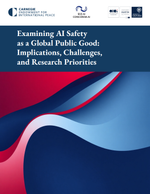Technological progress has created prosperity for mankind at large, yet it has always created winners and losers in the labour market. During the days of the British Industrial Revolution a sizeable share of the workforce was left worse off by almost any measure as it lost its jobs to technology. The result was a series of riots against machines.
In similar fashion, robots have recently reduced employment and wages in US labour markets. Building on the intuition that voters who have lost out to technology are more likely to opt for radical political change, we examine if robots shaped the outcome of the 2016 US presidential election. Pitching technology against a host of alternative explanations, including offshoring and trade exposure, we document that the support for Donald Trump was significantly higher in local labour markets more exposed to the adoption of robots.
A counterfactual analysis based on our estimates shows that Michigan, Pennsylvania, and Wisconsin would have swung in favour of Hillary Clinton if the exposure to robots had not increased in the immediate years leading up to the election, leaving the Democrats with a majority in the Electoral College.




